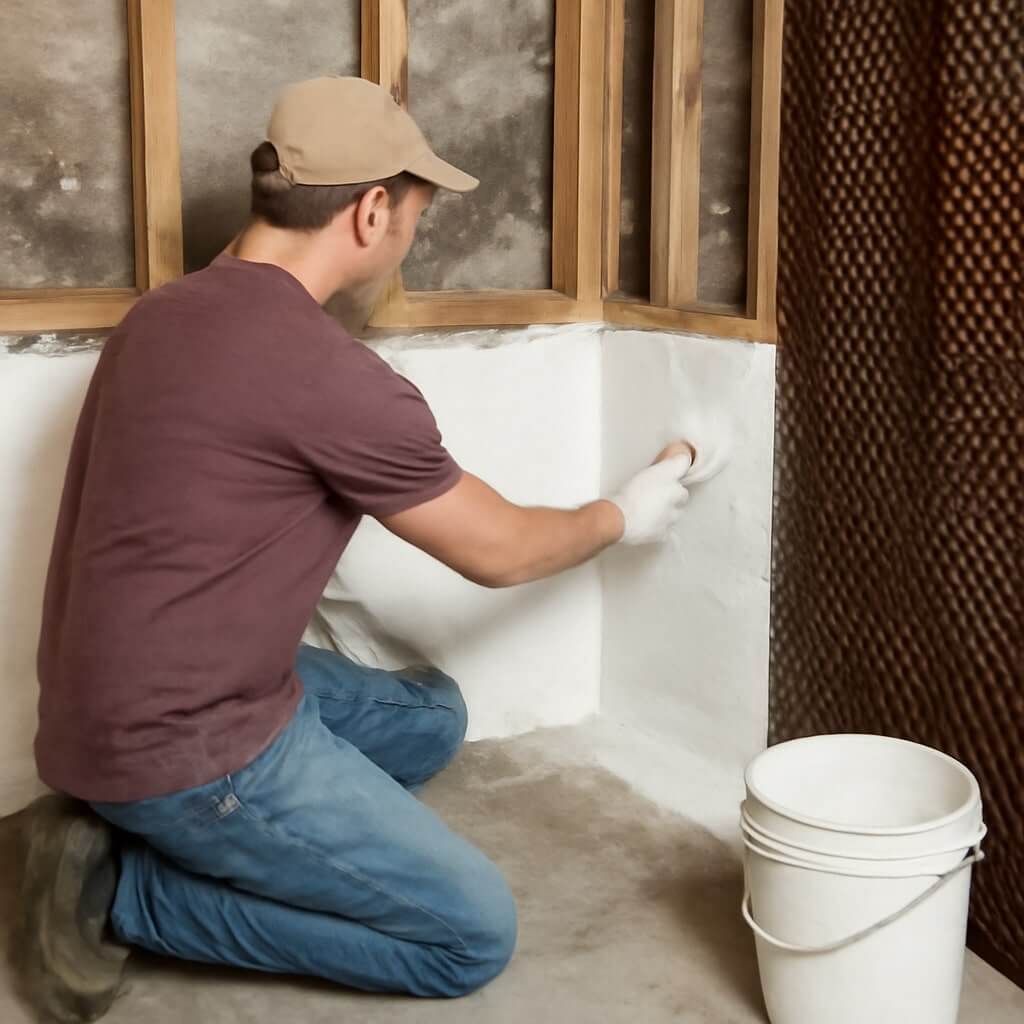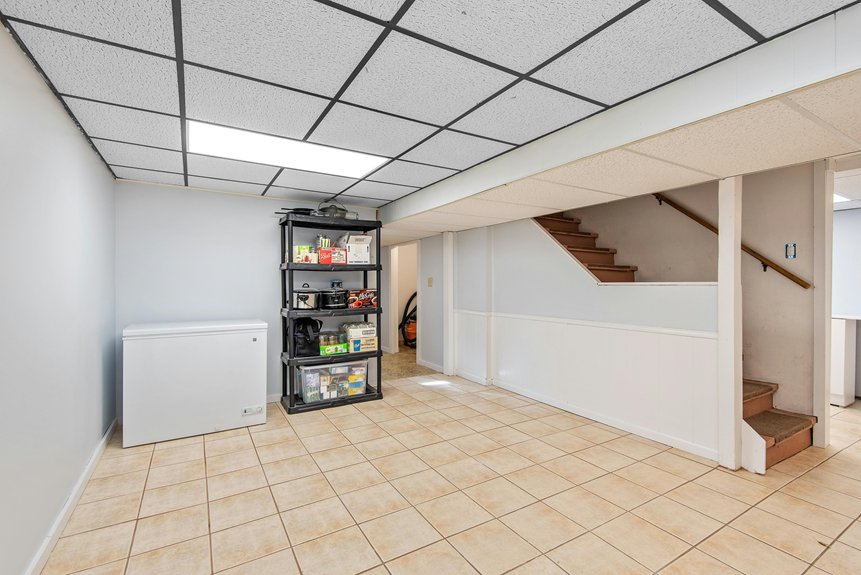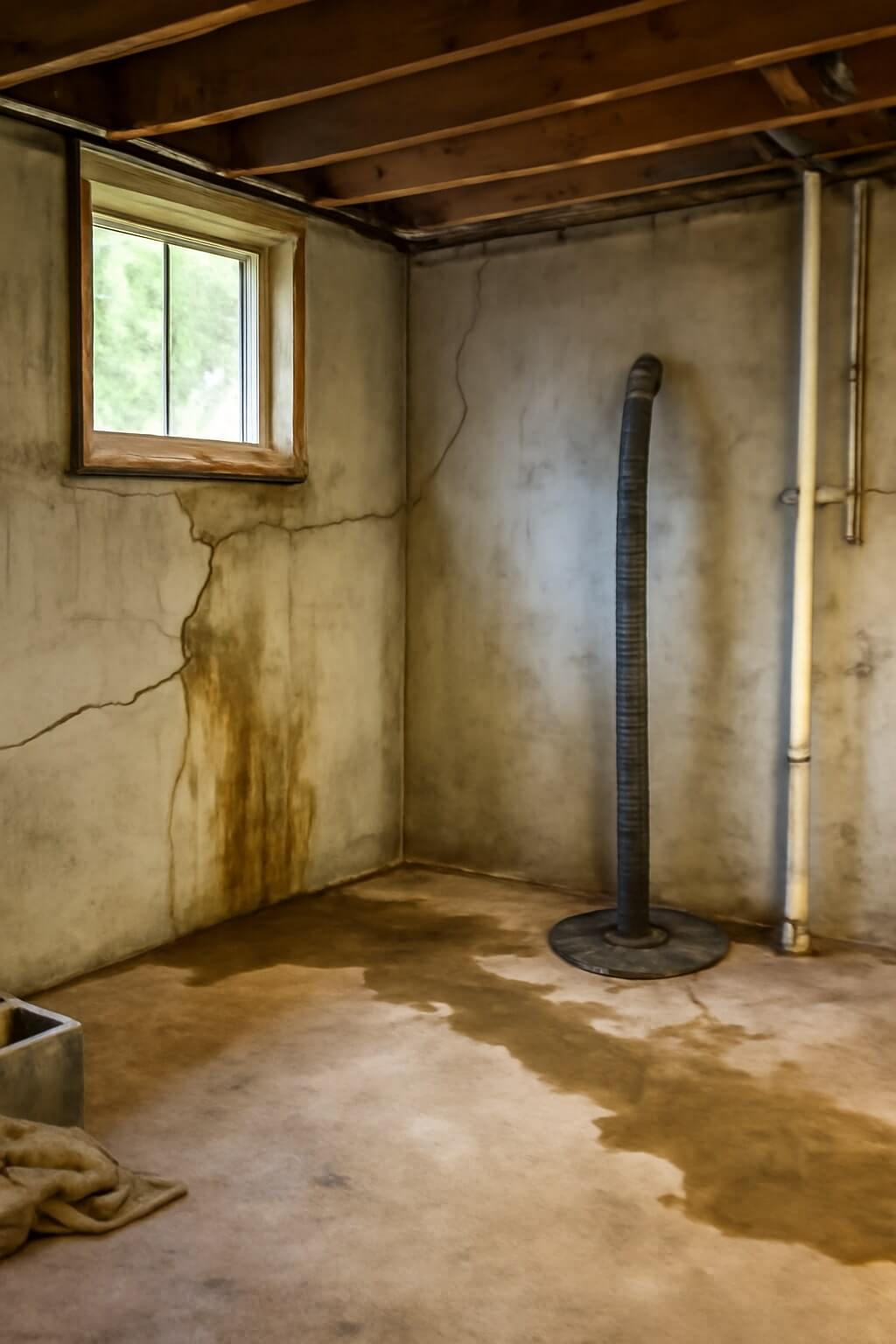If you’re a homeowner in Minot, ND, dealing with basement moisture issues, you know how vital it is to tackle them head-on. Start by evaluating humidity levels and identifying any signs of water intrusion. Once you’ve pinpointed the problem, you can take effective steps to waterproof your basement. From sealing cracks to installing drainage systems, there’s a practical approach you can follow. But where do you begin? Let’s explore the essential steps to protect your home.
Key Takeaways
- Assess your basement’s humidity levels using a hygrometer and maintain it below 60% to prevent moisture issues.
- Inspect for visible signs of water damage, such as stains, mold, or peeling paint, and address them promptly.
- Apply a waterproofing membrane and use hydraulic cement to seal any cracks in walls and floors effectively.
- Install interior drainage systems, including sump pumps and channel drains, to manage and redirect water away from the foundation.
- Schedule regular inspections of your waterproofing system and drainage to identify and address any deterioration or blockages.
Assessing Your Basement for Moisture Issues
Before you plunge into DIY basement waterproofing, it’s crucial to assess your basement for moisture issues.
Start by conducting moisture detection using a hygrometer to measure humidity levels. Ideally, you’ll want the humidity to stay below 60%.
Check for water stains, mold, or peeling paint on walls and floors, as these are signs of excessive moisture. Pay attention to musty odors, too.
Invest in a dehumidifier if humidity is high, and guarantee proper ventilation.
Understanding the Causes of Basement Water Problems
To tackle basement water problems effectively, you need to understand their root causes.
Soil composition can greatly influence how water drains around your home, while poor drainage systems often exacerbate the issue.
Additionally, foundation cracks can allow moisture to seep in, making it essential to identify and address these factors.
Soil Composition Effects
Understanding how soil composition affects water movement is essential for addressing basement water problems. Different soil types influence moisture retention, impacting how water drains around your home. Here’s a quick overview:
| Soil Type | Moisture Retention | Impact on Basements |
|---|---|---|
| Clay | High | Prone to water pooling |
| Sandy | Low | Drains quickly, less risk |
| Silt | Moderate | Balances drainage |
| Loam | Moderate | Ideal for drainage |
| Rocky | Low | Good drainage |
Poor Drainage Systems
Soil composition plays a key role in how effectively water is managed around your home, but even the best soil can’t compensate for a poorly designed drainage system.
If your drainage solutions aren’t up to par, water can accumulate and seep into your basement. Inspect your gutters and downspouts regularly; they should direct water away from your foundation.
Consider installing a sump pump to manage excess water effectively. These pumps can be lifesavers during heavy rains, preventing flooding and damage.
Addressing drainage issues proactively will help keep your basement dry and protect your home’s structural integrity in the long run.
Foundation Cracks Sources
Numerous factors can lead to foundation cracks, each contributing to basement water problems in unique ways. Understanding these sources is essential for effective DIY waterproofing.
- Foundation settlement caused by soil erosion or shifting
- Excessive moisture intrusion from heavy rains or melting snow
- Poor drainage systems around your home, allowing water to pool
- Temperature fluctuations, leading to expansion and contraction of materials
Essential Tools and Materials for DIY Waterproofing
To successfully tackle DIY basement waterproofing, you’ll need a handful of essential tools and materials that guarantee your project runs smoothly. Here’s a quick guide to get you started:
| Tool/Material | Purpose |
|---|---|
| Waterproofing Membrane | Protects walls from moisture |
| Hydraulic Cement | Fills and seals cracks |
| Paint Brush | Applies sealant evenly |
| Trowel | Applies cement smoothly |
| Safety Gear | Protects during the process |
Sealing Cracks and Gaps in Walls and Floors
When you notice cracks and gaps in your basement walls and floors, addressing them promptly is essential to preventing water intrusion and further damage.
Start with crack sealing to guarantee a watertight barrier, using a high-quality epoxy or polyurethane sealant. For gap filling, opt for caulking specifically designed for masonry or concrete surfaces.
- Apply sealant in a smooth, even layer.
- Allow adequate curing time for maximum effectiveness.
- Inspect regularly for new cracks or gaps.
- Consider applying a waterproof membrane for added protection.
Taking these steps will help you maintain a dry and safe basement environment.
Installing Interior Drainage Systems
When it comes to installing interior drainage systems, selecting the right materials is vital for effective water management.
You’ll want to understand the overall installation process to guarantee proper function, and we’ll also cover essential maintenance tips to keep your system running smoothly.
Let’s get started on safeguarding your basement from water damage.
Choosing Drainage Materials
Choosing the right drainage materials for your interior drainage system is essential for effective basement waterproofing.
Start by exploring various drainage pipe options, such as:
- Perforated pipes: Efficiently collect groundwater.
- PVC pipes: Durable and lightweight for easy installation.
- Channel drains: Direct water flow away from walls.
- Sump pump systems: Actively remove accumulated water.
Additionally, consider different waterproof membrane types to protect your walls.
A combination of these materials will guarantee water is efficiently directed away from your basement, reducing the risk of moisture damage.
Invest time in selecting quality products for long-lasting results.
Installation Process Overview
Installing an interior drainage system is an essential step in effective basement waterproofing. Start by removing any existing flooring and exposing the foundation walls.
Next, dig a trench along the perimeter, guaranteeing it’s deep enough to accommodate the drainage pipe. Lay the pipe so it slopes toward a sump pump or drainage point. Use gravel to cover the pipe and facilitate water flow.
After that, apply waterproofing techniques to the walls, enhancing protection against moisture. Finally, replace the basement insulation carefully to make sure it remains effective.
This process will considerably reduce water intrusion and keep your basement dry.
Maintenance Tips and Tricks
To keep your interior drainage system functioning effectively, regular maintenance is essential.
Implementing preventative measures and conducting seasonal inspections can save you from costly repairs.
Here are some tips to guarantee your system remains in top shape:
- Clear debris from drain inlets to prevent blockages.
- Check sump pump operation to confirm it activates when needed.
- Inspect drain lines for leaks or damage, sealing any gaps.
- Test water flow to confirm effective drainage and identify potential issues.
Applying Waterproof Coatings and Sealants
When you decide to tackle basement waterproofing, applying waterproof coatings and sealants can greatly enhance your protection against moisture.
Start by choosing high-quality waterproof paint designed for masonry or concrete surfaces. Clean the walls thoroughly to remove dust and debris, guaranteeing better adhesion.
Select premium waterproof paint for masonry, and ensure walls are clean for optimal adhesion.
Use a brush or roller for application, following proper techniques—apply in thin, even coats to avoid drips and guarantee full coverage. Allow each coat to dry completely before applying the next.
Focus on corners and joints, as these areas are more prone to leaks. This simple yet effective process can notably reduce moisture intrusion in your basement.
Improving Exterior Drainage and Grading
Improving exterior drainage and grading can greatly reduce the risk of water pooling around your basement.
To achieve effective drainage solutions, consider these grading techniques:
- Slope soil away from your foundation to direct water flow
- Install gutters and downspouts to channel rainwater
- Create swales or trenches to manage surface runoff
- Use permeable materials for landscaping to enhance water absorption
Maintaining Your Waterproofing System Over Time
While installing a waterproofing system is a crucial first step, maintaining it over time is essential for long-lasting protection against basement leaks.
Schedule regular inspections to check for cracks, signs of moisture, or any deterioration in your system. If you spot any issues, use appropriate repair techniques, like sealing cracks with hydraulic cement or replacing damaged membranes.
Don’t forget to monitor your drainage systems, ensuring they remain clear and functional.
Conclusion
By taking proactive steps to waterproof your basement, you can protect your home from moisture damage in Minot, ND. Regularly assess your space for signs of water intrusion, and don’t hesitate to tackle repairs with the right tools and materials. Installing effective drainage systems and applying waterproof coatings will enhance your home’s resilience. With ongoing maintenance and attention, you’ll guarantee a dry, healthy basement for years to come, adding value and comfort to your living space.




